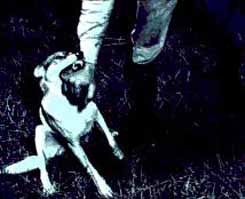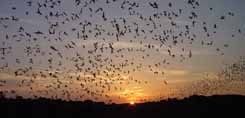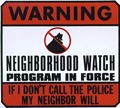
Rabies is a medical urgency not an emergency, but decisions must not be delayed. Any wounds should be immediately washed and medical attention from a health care professional should be sought for any trauma due to an animal attack before considering the need for rabies vaccination.
What to Do if You Have a Potential Rabies Exposure
The need for rabies vaccination should be evaluated under the advisement of your physician and/or a state or local health department official. Decisions to start vaccination, known as postexposure prophylaxis (PEP), will be based on your type of exposure, the animal you were exposed to, as well as laboratory and surveillance information for the area where the exposure occurred.
Learn how to prevent dog bites.
What Were You Exposed To?
Rabies virus is transmitted through specific bodily excretions and tissue. Saliva and brain/nervous tissue are considered infectious materials that can transmit rabies virus. If contact with either of these has occurred the type of exposure should be evaluated to determine if PEP is necessary.
Contact such as petting or handling an animal, or contact with blood, urine or feces does not constitute an exposure, and therefore no postexposure prophylaxis is needed in these situations.
Rabies virus becomes noninfectious by desiccation and ultraviolet irradiation. Different environmental conditions affect the rate at which the virus becomes inactive, but in general, if the material containing the virus is dry, the virus can be considered noninfectious.
What Type of Exposure Occurred?
Rabies is transmitted only when the virus is introduced into a bite wound, open cuts in skin, or onto mucous membranes (such as the mouth or eyes).
When an exposure has occurred, the likelihood of rabies infection varies with the nature and extent of that exposure. Under most circumstances, two categories of exposure -- bite and nonbite -- should be considered.
Bite
Any penetration of the skin by teeth constitutes a bite exposure. All bites, regardless of body site, represent a potential risk of rabies transmission, but that risk varies with the species of biting animal, the anatomic site of the bite, and the severity of the wound.
Bites by some animals, such as bats, can inflict minor injury and thus be difficult to detect.

Nonbite
Nonbite exposures from terrestrial animals rarely cause rabies. However, occasional reports of rabies transmission by nonbite exposures suggest that such exposures should be evaluated for possible PEP administration.
The contamination of open wounds, abrasions, mucous membranes, or theoretically, scratches (potentially contaminated with infectious material from a rabid animal) also constitutes a nonbite exposure.
Other contact by itself, such as petting a rabid animal and contact with blood, urine, or feces of a rabid animal, does not constitute an exposure and is not an indication for PEP.
What Kind of Animals Have Rabies?
Bites of squirrels, hamsters, guinea pigs, gerbils, chipmunks, rats, mice, other small rodents, rabbits, and hares almost never require rabies postexposure prophylaxis.
Domestic Dogs, Cats, and Ferrets
The likelihood of rabies in a domestic animal varies by region; hence, the need for postexposure prophylaxis also varies.
In the continental United States, rabies among dogs is reported sporadically in states with enzootic wildlife rabies.
During 2000-2004, more cats than dogs were reported rabid in the United States. The majority of these cases were associated with spillover infection from raccoons in the eastern United States. The large number of rabies-infected cats might be attributed to fewer cat vaccination laws, fewer leash laws, and the roaming habits of cats.
In many developing countries, dogs are the major vector of rabies; exposures to dogs in such countries represent an increased risk of rabies transmission.
Other Domestic Animals
In all instances of exposure to other domestic animal species, the local or state health department should be consulted before a decision is made to euthanize and test the animal or initiate postexposure prophylaxis.
Other Exotic Pet Species
Other exotic mammalian species of animals kept as pets are considered the same as other wildlife species. Consultation should be sought from local or state health departments regarding decisions on postexposure prophylaxis.
Bats
Rabid bats have been documented in all 49 continental states (Hawaii is rabies free), and bats are increasingly implicated as important wildlife reservoirs for variants of rabies virus transmitted to humans.

Recent data suggest that transmission of rabies virus can occur from minor, seemingly unimportant, or unrecognized bites from bats. Human and domestic animal contact with bats should be minimized, and bats should never be handled by untrained and unvaccinated persons or be kept as pets.
In all instances of potential human exposures involving bats, the bat in question should be safely collected, if possible, and submitted for rabies diagnosis. Rabies postexposure prophylaxis is recommended for all persons with bite, scratch, or mucous membrane exposure to a bat, unless the bat is available for testing and is negative for evidence of rabies.
 Print
Print Email
Email







